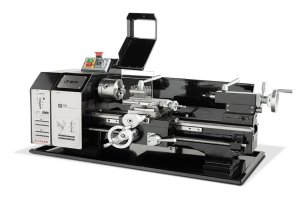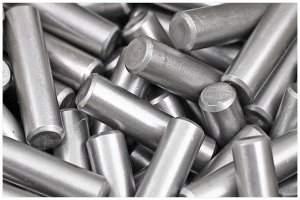1.0 Introduction: What Is Annealing?
When I first encountered the question what is annealing in my early days as a materials engineer, I was fascinated by its transformative power. Annealing is a heat treatment process in metallurgy that reshapes a material’s internal structure to make it more pliable and less brittle. By heating a metal to a precise temperature, holding it there, and cooling it at a controlled rate, the annealing process boosts ductility—the ability to shape materials without cracking—while reducing hardness. This makes it a cornerstone for industries like CNC machining, where precision and workability are paramount.In my experience, annealing isn’t just about softening metals like steel or aluminum; it’s about giving machinists and engineers the flexibility to create intricate parts. Whether I’m preparing a steel blank for CNC machining or softening copper for a custom component, annealing ensures the material behaves predictably under the spindle. This process is like a reset button for metals, undoing the stresses from prior manufacturing steps and setting the stage for precision work.
2.0 Why Annealing Is Essential for CNC Machining and Manufacturing
The annealing process solves critical challenges in material fabrication, especially in CNC machining, where material properties directly impact tool life and part quality. Here’s why it matters:
- Reversing Work Hardening: Processes like rolling or forging make metals brittle, complicating CNC machining. What is annealing in this context? It’s the key to restoring ductility, allowing me to machine complex geometries without material failure. For instance, I’ve seen annealed low-carbon steel flow smoothly under a CNC mill, reducing tool wear significantly.
- Stress Relief: Welding or casting introduces internal stresses that can distort parts during CNC machining. Annealing relaxes these stresses, ensuring dimensional stability. I once worked on a welded steel assembly that warped until we annealed it, saving the project from costly rework.
- Enhanced Workability: By softening materials, annealing improves machinability and formability. In my shop, annealed aluminum allows for faster cutting speeds and cleaner finishes on CNC lathes.
- Improved Properties: The annealing process can enhance electrical conductivity, which is critical for components like copper connectors machined on CNC equipment.
From my perspective, annealing is a game-changer in CNC machining. It transforms challenging materials into cooperative ones, making it easier to achieve tight tolerances and high-quality finishes.
3.0 The Science of Annealing: A Microstructural Perspective
To truly grasp what is annealing, you need to dive into the atomic level, where the magic happens. As someone who’s studied material microstructures under a microscope, I can tell you the annealing process is like choreography for atoms. Heat energizes atoms to move, repairing damage from mechanical work through a process called atomic diffusion. This reduces defects known as dislocations, which make metals hard and brittle.Before annealing, a work-hardened metal’s microstructure resembles a chaotic tangle of deformed grains. After the annealing process, it transforms into a landscape of orderly, strain-free grains—almost like resetting a scrambled puzzle. In CNC machining, this softer structure means less resistance when cutting, which I’ve seen firsthand when milling annealed brass versus its hardened counterpart. The difference in tool chatter and surface finish is night and day.
4.0 The Three Stages of the Annealing Process
What is annealing at its core? It’s a journey through three stages that reshape a material’s properties:
- Recovery: As heat is applied, dislocations rearrange into lower-energy states, relieving internal stresses. I’ve used this stage in CNC machining to stabilize parts before precision milling, ensuring they don’t deform mid-process.
- Recrystallization: At a specific temperature, new, strain-free grains form, replacing the deformed ones. This is where the material becomes significantly softer, which I’ve found critical when machining intricate features on a CNC router.
- Grain Growth: If held too long at high temperatures, grains grow larger, increasing ductility but potentially reducing strength. In my experience, controlling this stage is key to balancing softness for machining with strength for final use.
I’ve learned that timing is everything in annealing. Overdo it, and you risk oversized grains that weaken the part; underdo it, and the material remains too hard for efficient CNC machining.
5.0 Types of Annealing for CNC Machining and More
The annealing process isn’t one-size-fits-all. Different techniques cater to specific needs, especially in CNC machining:
| Process | Goal | Temperature (Steel) | Cooling | Outcome |
| Full Annealing | Maximum softness for CNC machining | Above A3/Acm | Very Slow (Furnace) | Soft, machinable, coarse pearlite |
| Process Annealing | Restore ductility for further machining | Below A1 | Slow to Moderate (Air) | Ductile, retains strength |
| Stress-Relief Annealing | Prevent distortion in machined parts | Well Below A1 | Slow (Furnace/Air) | Stress-free, stable for CNC |
| Spheroidizing | Optimize high-carbon steel machinability | Just Below A1 | Slow (Furnace) | Soft, ideal for complex cuts |
| Normalizing | Refine grains for tougher machined parts | Above A3/Acm | Moderate (Air) | Stronger, uniform structure |
In my workshop, I often use process annealing between CNC machining steps to keep steel ductile, especially for multi-stage projects like crafting precision gears.
6.0 Material-Specific Annealing for CNC Machining
What is annealing for different materials in CNC machining? Parameters vary to suit each material’s properties:
| Material | Temperature (°C) | Temperature (°F) | Key Considerations |
| Low-Carbon Steel | 550–700 | 1020–1290 | Ideal for CNC machining; restores ductility |
| High-Carbon Steel | 815–930 | 1500–1700 | Slow cooling ensures softness for milling |
| Austenitic Stainless Steel | 1040–1100 | 1900–2010 | Rapid cooling preserves corrosion resistance |
| Aluminum (6061) | 340–415 | 650–775 | Slow cooling prevents stresses in CNC parts |
| Copper/Brass | 300–650 | 575–1200 | Flexible cooling for easy machining |
| Glass (Soda-Lime) | 450–550 | 850–1020 | Slow cooling prevents shattering |
| Polycarbonate | 120–135 | 250–275 | Relieves stresses for stable CNC cuts |
I’ve annealed aluminum 6061 for CNC machining aircraft components, ensuring it’s soft enough for intricate milling without compromising final strength after heat treatment.
7.0 Real-World Applications: Annealing in Action
The annealing process shines in diverse applications, particularly in CNC machining:
- Automotive: Annealing enables CNC machining of steel and aluminum into complex body panels. I’ve seen laser annealing create soft zones in crash structures, enhancing safety.
- Aerospace: Solution annealing strengthens nickel superalloys for turbine blades. In my work, annealed alloys allowed precise CNC machining for high-performance parts.
- Semiconductors: Rapid Thermal Annealing repairs silicon wafers, enabling microscopic features. I’ve consulted on projects where this ensured defect-free CNC-machined chip molds.
- Toolmaking: What is annealing for knifemakers? It softens high-carbon steel for shaping on CNC machines before hardening. I once annealed steel for a custom blade, making it a breeze to mill.
- Jewelry: Annealing gold or silver restores malleability for intricate CNC-engraved designs, a technique I’ve used to craft detailed pendants.
In my career, annealing has been a lifesaver for CNC machining projects, turning brittle materials into cooperative partners for precision work.
8.0 Annealing vs. Other Heat Treatments
What is annealing compared to other heat treatments? Each serves unique purposes in CNC machining:
| Process | Goal | Temperature (Steel) | Cooling | Outcome |
| Annealing | Softness for CNC machining | Above A3 or Below A1 | Very Slow | Soft, machinable |
| Normalizing | Toughness for machined parts | Above A3/Acm | Moderate (Air) | Strong, uniform |
| Quenching | Maximum hardness | Above A3/Acm | Very Fast (Water/Oil) | Hard, brittle |
| Tempering | Toughness post-quenching | Below A1 | Slow to Medium | Durable, less brittle |
I’ve found annealing indispensable before CNC machining, while quenching and tempering are better for final hardening of tools like end mills.
9.0 My Insights on Annealing for CNC Machining
Reflecting on my years in materials engineering, what is annealing to me? It’s a process that bridges science and craftsmanship. The annealing process empowers CNC machining by making materials predictable and cooperative. I recall a project where unannealed stainless steel caused excessive tool wear on a CNC lathe. After stress-relief annealing, the same material machined like butter, saving time and costs.My advice? Always tailor the annealing process to your material and machining goals. For CNC machining, process annealing is often enough between steps, but full annealing is ideal for heavy milling. Monitor cooling rates closely—too fast, and you reintroduce stresses; too slow, and you may lose strength. In CNC machining, annealed materials mean less vibration, better finishes, and happier operators.
10.0 Conclusion: The Transformative Power of Annealing
What is annealing in the world of manufacturing? It’s the unsung hero behind precision CNC machining and beyond. By softening metals, relieving stresses, and enhancing workability, the annealing process enables industries to craft everything from car panels to turbine blades. From my first-hand experience, annealing turns challenging projects into successes, ensuring materials meet the demands of modern manufacturing. Whether you’re a machinist or an engineer, understanding what is annealing unlocks endless possibilities for creating high-quality, durable products.
FAQ:
1.What is annealing?
Annealing is a heat treatment process that heats a material to a specific temperature, holds it there, and cools it slowly to increase ductility, reduce hardness, and make it easier to machine or shape, especially in CNC machining.
2.What are the main types of annealing?
The main types are full annealing (maximum softness), process annealing (restores ductility), stress-relief annealing (reduces internal stresses), spheroidizing (improves machinability of high-carbon steel), and normalizing (refines grain structure for toughness).
3.How does annealing differ from normalizing, quenching, and tempering?
Annealing softens materials with slow cooling, normalizing refines grains with air cooling, quenching hardens with rapid cooling (water/oil), and tempering reduces brittleness after quenching with controlled heating and cooling.
4.Why is annealing important for CNC machining?
Annealing softens metals, relieves stresses, and improves machinability, making it easier to achieve precise cuts and complex shapes in CNC machining without tool wear or material cracking.
5.What materials can be annealed?
Metals like low-carbon steel (550–700°C), high-carbon steel (815–930°C), stainless steel (1040–1100°C), aluminum (340–415°C), copper/brass (300–650°C), and even non-metals like glass (450–550°C) and polycarbonate (120–135°C) can be annealed.
6.How does annealing affect material properties?
It reduces hardness, increases ductility, relieves internal stresses, and can enhance electrical conductivity by reorganizing the material’s microstructure, making it ideal for further processing like CNC machining.
7.What are some real-world applications of annealing?
Annealing is used in automotive (stamping panels), aerospace (turbine blades), semiconductors (silicon wafers), toolmaking (knives), and jewelry (shaping gold/silver), often to prepare materials for CNC machining or forming.
Reference:
https://en.wikipedia.org/wiki/Annealing_(materials_science)
https://en.wikipedia.org/wiki/Annealing
https://brilliant.org/wiki/annealing/
https://simple.wikipedia.org/wiki/Annealing
Other Articles You Might Enjoy
- How Ductility Influences CNC Machining Processes
Introduction Ductility is a critical material property that significantly influences the CNC machining processes used in manufacturing. It refers to a material's ability to deform under tensile stress, which allows…
- Why Annealing Brass Matters in CNC Machining
Introduction Annealing brass is a key process in CNC machining, as it enhances machinability and improves the final quality of parts. Brass, an alloy primarily of copper and zinc, is…
- Annealed Metals in Manufacturing Explained: Softening, Stress Relief, and More
Chapter 1: What Does "Annealed" Mean in Manufacturing? If you're involved in manufacturing or machining, you've probably come across the term "annealed" before. But if you're new to the term, don't worry.…
- Revealing the Annealing Process of Copper and Alloys in CNC Machining Parts
In the realm of CNC machined parts, achieving the perfect balance of strength, flexibility, and durability often requires meticulous heat treatment processes. One such crucial process is annealing, especially for…






